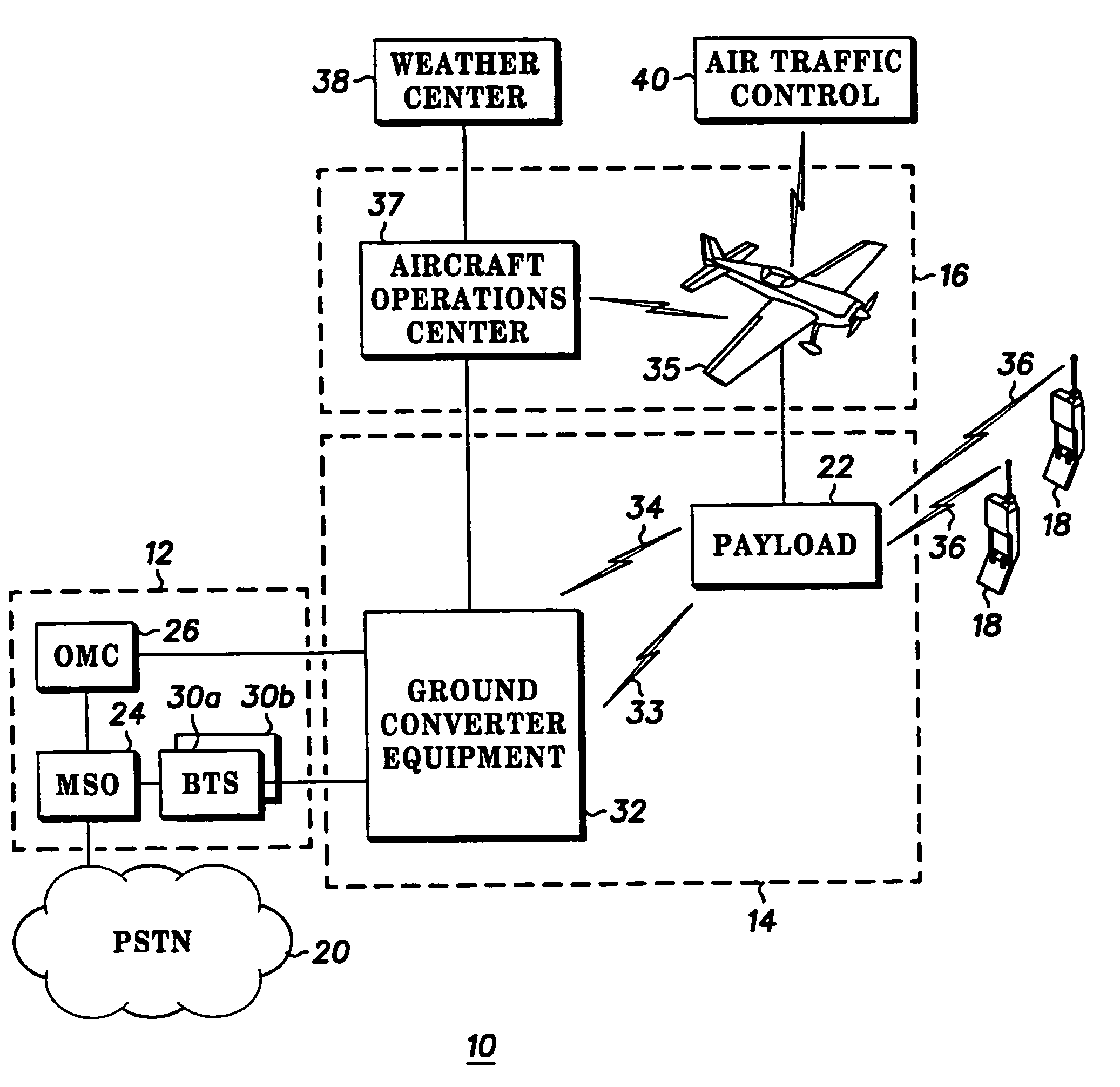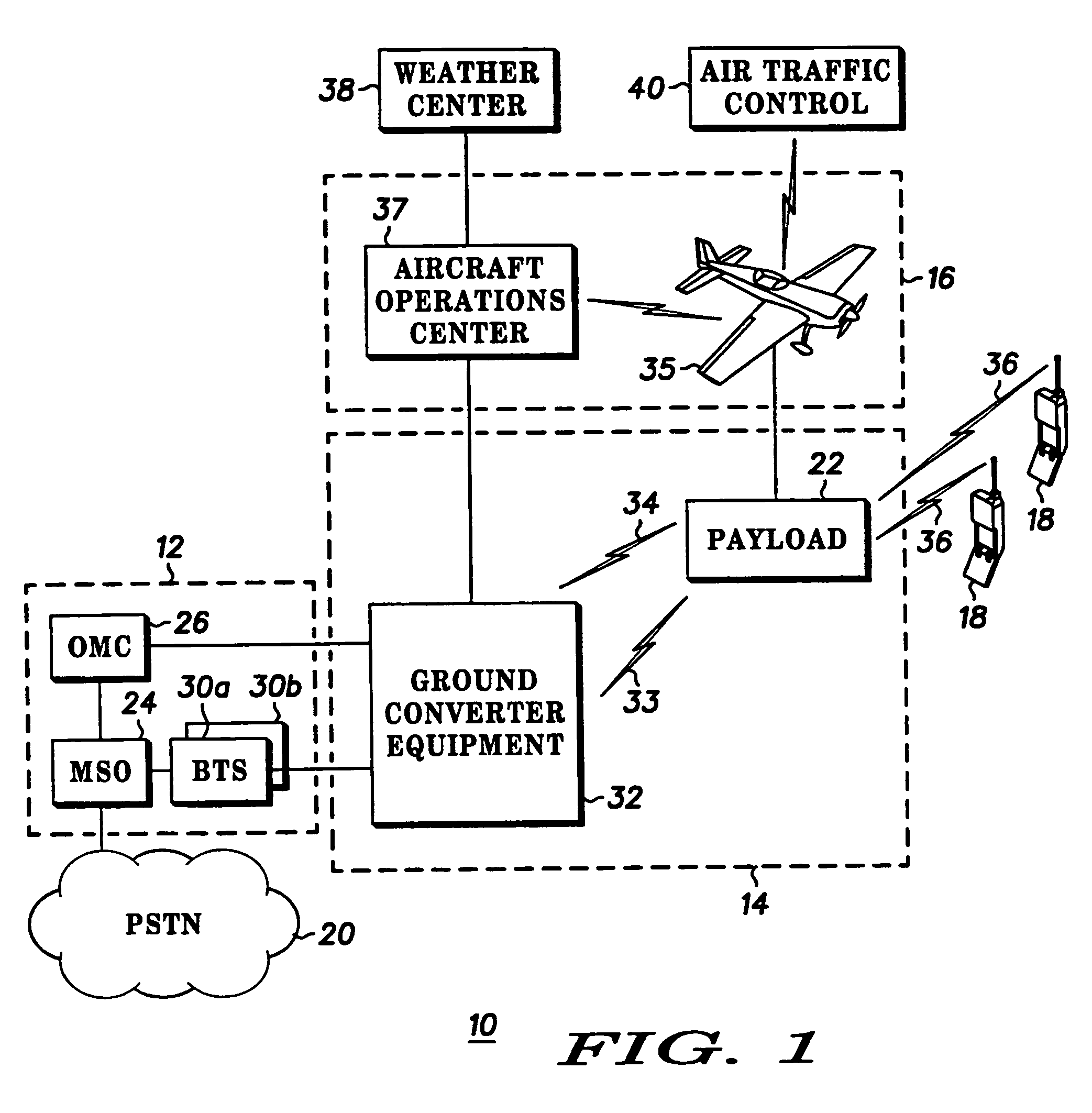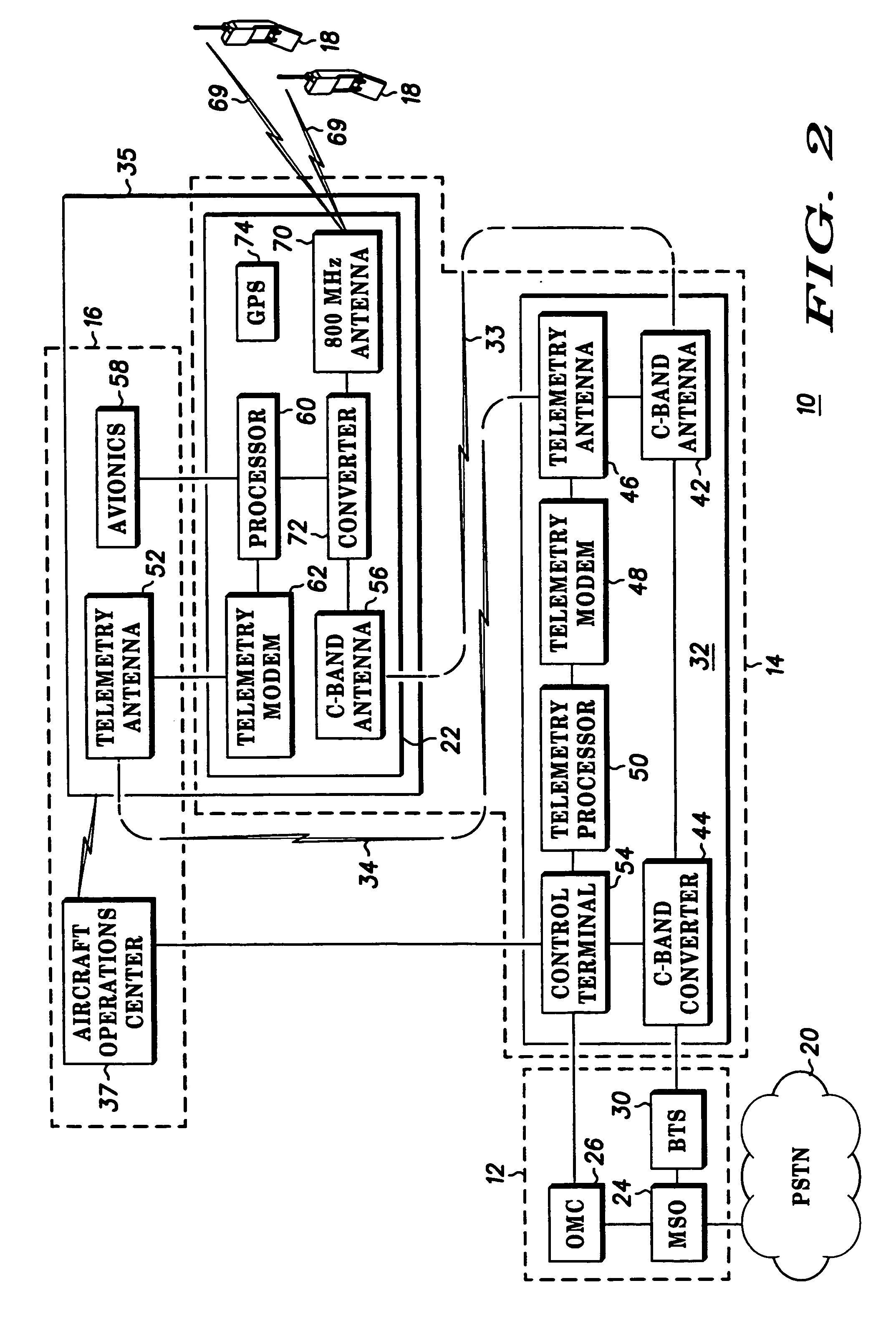Multi-airplane cellular communications system
a cellular communication system and multi-aircraft technology, applied in the field of multi-aircraft cellular communications systems, can solve the problems of limited or no cellular service at all, the buildout rate of terrestrial cell stations is typically slow and expensive, and the inability of transceivers to handle calls during both off-peak and peak times to adequately handle large volumes of calls
- Summary
- Abstract
- Description
- Claims
- Application Information
AI Technical Summary
Problems solved by technology
Method used
Image
Examples
first embodiment
[0031]In accordance with the first embodiment, each of the airplanes 35′, 35″ is an airplane designed to fly at low altitudes, such as a Pilatus Model PC12 airplane, which is capable of flying daily missions of up to 8 hours in duration each The airplane 35′ takes over execution of the flight path 86 for the airplane 35″ at the end of the mission of the airplane 35″ in a manner discussed below. Likewise, the airplane 35″ takes over execution of the flight path 86 for the airplane 35′ at the end of the mission of the airplane 35′. If one of the airplanes, such as the airplane 35′ as shown in FIG. 1, cannot take off from an airport, such, as the airport 84, at which it is located due to inclement weather in the vicinity of the airport 84 or due to maintenance-related problems, the airplane 35″ may instead be used to take over flight pattern execution from the airplane 35′.
[0032]Still referring to FIG. 3, the airports 82, 84 are staged a predetermined distance apart from each other, wi...
fourth embodiment
[0050]In view of the foregoing, it should be appreciated that the fourth embodiment ensures that an airborne cellular communications system is robust and scalable in response to customer needs, and that communications service remains uninterrupted, even during communications coverage switchover between system airborne repeaters. In addition, the above-discussed switchover techniques enable an airborne cellular communications system to adopt existing terrestrial system hand-off hardware and software. The switchover techniques can be adapted to the underlying terrestrial system protocol, regardless of whether that protocol is, for example, CDMA, TDMA, GSM or broadband to airborne system protocol. In addition, peak call traffic loads can be addressed by utilizing the coverage of both the above-discussed first and second airplanes to increase call handling capacity, with one of the airplanes being removable from the coverage area through execution of one of the above-discussed switchove...
fifth embodiment
[0054]Therefore, the flight pattern configuration and airplane movement technique of the fifth embodiment reduces the total possible geographic area that can be covered by an airplane when compared to a similar centrally-orbiting airplane, the configuration and technique increase overall system availability for the geographic area that is covered by enabling the airplane executing a predetermined flight pattern to maneuver around storms and other adverse weather patterns without dropping coverage.
[0055]FIG. 15 is a flow diagram that summarizes the methodology used to determine whether an airplane executing one of the flight patterns 176a–176d should be moved along the flight pattern circumscribing circle 178. At 180, it is determined that weather that has begun to affect or that will affect communications coverage has intruded into the vicinity of a currently-executed airplane flight pattern. The airplane continues to execute its current flight pattern until, at 182, it reaches a po...
PUM
 Login to View More
Login to View More Abstract
Description
Claims
Application Information
 Login to View More
Login to View More - R&D
- Intellectual Property
- Life Sciences
- Materials
- Tech Scout
- Unparalleled Data Quality
- Higher Quality Content
- 60% Fewer Hallucinations
Browse by: Latest US Patents, China's latest patents, Technical Efficacy Thesaurus, Application Domain, Technology Topic, Popular Technical Reports.
© 2025 PatSnap. All rights reserved.Legal|Privacy policy|Modern Slavery Act Transparency Statement|Sitemap|About US| Contact US: help@patsnap.com



